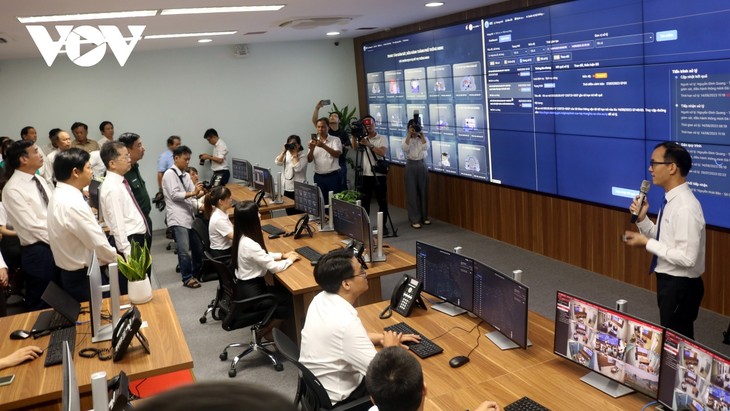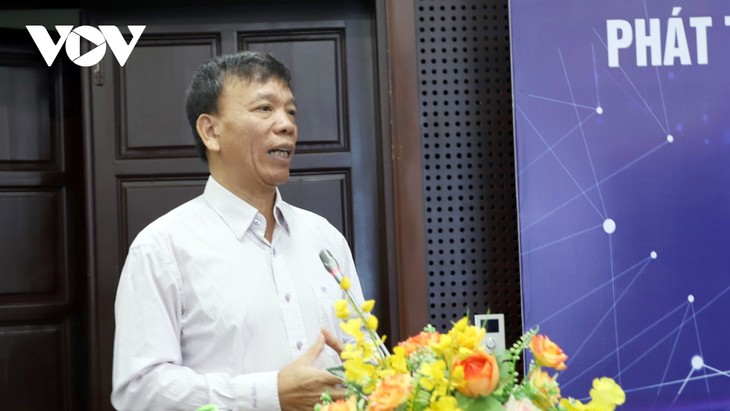(VOVWORLD) - Da Nang city is working on a semiconductor chip and microchip development project and building mechanisms and policies to attract human resources in these fields. This is part of the city’s effort to realize its aspiration of becoming a destination for semiconductor chip design.
 At IOC center in Da Nang (Photo: VOV) At IOC center in Da Nang (Photo: VOV) |
Da Nang currently has 250 businesses engaged in manufacturing and assembling electronic components, that employ more than 10,000 workers. Last year the digital economy, which includes the electronics industry, telecommunications, information technology, and the internet economy, contributed nearly 20% of the city’s GRDP.
The Party Politburo's Resolution on building and developing Da Nang city to 2030, with a vision to 2045, identifies 5 priority areas, which include information technology, electronics, and telecommunications. Da Nang set a goal of expanding the digital economy to contribute at least 30% of the city's GRDP by 2030.
 Mr. Trinh Thanh Lam, Manager at Synopsys in South Asia, says Da Nang has advantages to develop semiconductor chip design. (Photo: VOV) Mr. Trinh Thanh Lam, Manager at Synopsys in South Asia, says Da Nang has advantages to develop semiconductor chip design. (Photo: VOV) |
Nguyen Van Quang, Secretary of the municipal Party Committee, said the semiconductor chip industry is a priority which is expected to create new momentum for local development.
 Nguyen Van Quang, Secretary of the municipal Party Committee, (white shirt on the left) visits Synopsys in Da Nang (Photo: VOV) Nguyen Van Quang, Secretary of the municipal Party Committee, (white shirt on the left) visits Synopsys in Da Nang (Photo: VOV) |
The city has asked local agencies to develop a "Semiconductor chip and microchip development project" and work out mechanisms and policies to attract semiconductor microchip human resources while enabling the semiconductor chip sector to access loans of the City Investment Fund for Development, according to Mr. Quang.
“We are working to attract experts to Da Nang to transfer their knowledge and experience. We have built an intellectual ecosystem and are determined to make Vietnam’s semiconductor chip industry world famous. Da Nang hopes to become the center of this industry," said Mr. Quang.
Human resources play an important role in digital transformation. The city government and local universities have invested in microchips and electronics training. Associate Professor Dr. Pham Hong Hai, Vice Rector of Da Nang University of Technology, said that to meet the human resource needs of the semiconductor chip industry, his University is coordinating with businesses and experts inside and outside Vietnam to develop short-term courses which can train 150-200 engineers annually.
Mr. Hai said: “Until 2030, we will focus on training a team of lecturers specialized in this field and invest more in facilities. We hope to open a new Microelectronics and IC Design major this year. We will invite experts and businesses in those fields to get involved in the training.”
Da Nang city is striving to become a center for chip design and put Vietnam’s semiconductor chips on the world map.